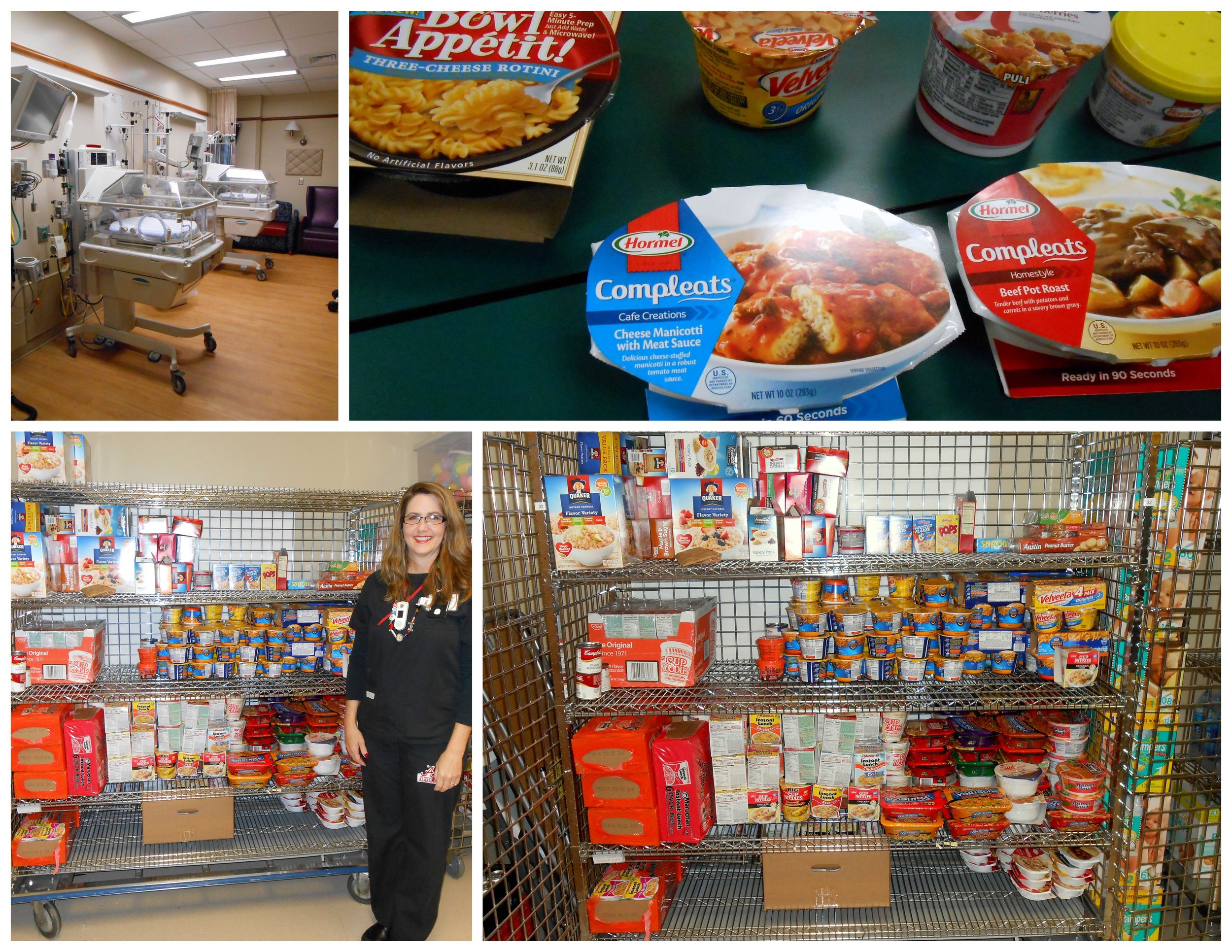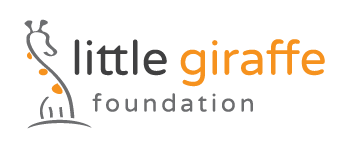
Little Giraffe Foundation
2016 Neonatal Research Grants
After long deliberations, Little Giraffe Foundation voted to fund 22 initiatives for 2016, totaling over $49,000 – 4 Neonatal Research Grants to forward medical care for premature babies and 18 NICU Support Grants designed to improve the lives of the families and babies in the NICU.
2016 Neonatal Research Grants
UCLA David Geffen School of Medicine, Los Angelos, CA - $10,000 Awarded
Research: Proprioceptive Stimulation for cardiorespiratory stability to optimize neurodevelopmental outcomes in premature neonates
Kalpashri Kesavan, MD – PI, Assistant Professor, Division of Neonatology & Developmental Biology, Dept. of Pediatrics, UCLA David Geffen School of Medicine
Ronald M. Harper, Ph.D. - Co-Investigator, Distinguished Professor, Department of Neurobiology and the Brain Research Institute, University of California, Los Angeles
The objective is to reduce the cardiorespiratory dysfunction of apnea of prematurity (AOP). AOP is common in infants born < 34 weeks gestational age (1), and current standards for intervention (2-4) are suboptimal, lacking in effectiveness (prone positioning), hazardous to the lung (positive pressure ventilation), or carry risks of ineffective action and potential injury to the developing brain (caffeine). Breathing pauses in premature infants are frequently accompanied by intermittent hypoxic (IH) events and bradycardia that contribute to multiple pathologies. In human and animal models, these pathologies include bronchopulmonary dysplasia, retinopathy of prematurity, injury to sympathetic ganglia, impaired pancreatic islet cell and bone development, cerebellar injuries, and neurodevelopmental disabilities (5-10). We propose to decrease IH and bradycardic events by activating inherent reflexes established to assist ventilation by simulating “limb movement” via activation of limb proprioceptive fibers. This passive neuromodulation “tricks” the respiratory control system by using a simple, non-invasive vibrator device placed over limb proprioceptor nerves, the nerves which carry signals of limb movement to the brain. This intervention makes use of the principle that limb movements facilitate breathing (11-15) by-passing the usual carbon dioxide or oxygen sensing systems which may be deficient in prematurity.
Ann & Robert H. Lurie Children’s Hospital of Chicago, Chicago, IL - $10,000 Awarded
Research: A Restricted MicroRNA Panel for Cerebral Palsy
Kenny Kronforst, MD, MPH – Co-PI, Instructor, Northwestern University Feinberg School of Medicine, Division of Neonatology, Department of Pediatrics, Attending Neonatologist, Ann & Robert H. Lurie Children’s Hospital of Chicago and Prentice Women’s Hospital
Maria Dizon, MD, MSCI – Co-PI, Assistant Professor, Northwestern University, Feinberg School of Medicine, Division of Neonatology, Department of Pediatrics, Attending Neonatologist, Ann & Robert H. Lurie Children’s Hospital of Chicago and Prentice Women’s Hospital
Cerebral palsy (CP), a heterogeneous group of non-progressive motor disorders that result from white matter injury, represents the most common motor disability in childhood, affecting 1 in 300 children in the U.S. These children have significant limitations in motor function with variable degrees of cognitive impact. The most common underlying cause is prematurity and very low birthweight. High-risk infants are identified based on their perinatal history and clinical course. The diagnosis of CP cannot be made before brain development is complete at 18-24 months. Prior to this age, the positive predictive value of clinical criteria and brain imaging, including head ultrasound and magnetic resonance imaging, is low. Thus, reliable, early predictors for development of CP are sorely needed. Our objective is to identify biomarkers for CP, namely specific microRNAs. MicroRNAs are small, noncoding RNAs that regulate developmental processes through modulation of post-transcriptional gene expression. Their role in the pathogenesis of a number of central nervous system conditions, including white matter diseases, has been recently elucidated. In particular, studies have shown that profiles of microRNAs in the peripheral circulation are altered in disease states. Thus, microRNA panels have potential as early biomarkers of CP, allowing for earlier identification and intervention.
The Research Institute at Nationwide Children's Hospital, Detroit, MI - $10,000 Awarded
Research: Dual Specificity Phosphatase (DUSP)-1: A Novel Target to Prevent Necrotizing Enterocolitis
Maria M. Talavera, DO – PI at The Research Institute at Nationwide Children’s Hospital, Assistant Professor of Pediatrics at The Ohio State University; Neonatologist at Nationwide Children’s Hospital;
Our project goal is to understand the underlying mechanisms responsible for the exaggerated pro-inflammatory response that characterizes necrotizing enterocolitis (NEC) and thereby identify novel diagnostic biomarkers necessary for early identification and prevention. Necrotizing Enterocolitis (NEC) is a form of acute intestinal injury that is a leading cause of death and poor outcome in premature infants. NEC-associated mortality rates in preterm infants can range from 30% to 50%, in the most severe cases. Despite decades of research and advances in neonatal medicine, we lack predictive biomarkers to identify preterm infants at risk for developing NEC and specific therapies for NEC.
University of Virginia, Charlottesville, VA - $10,000 Awarded*
Research: Pulse oximetry warning score (POWS) for early diagnosis of sepsis and necrotizing enterocolitis in premature infants
Brynne Sullivan, MD – PI, Neonatology Fellow, University of Virginia
As survival at birth increases for the most premature infants, the importance of prevention or early recognition of life-threatening conditions such as sepsis and necrotizing enterocolitis (NEC) in the Neonatal Intensive Care Unit (NICU) also increases. Despite continuous vital sign monitoring and frequent assessments by skilled clinicians, early signs of sepsis and NEC go undetected. Detection using algorithms to identify pathologic vital sign patterns can reduce mortality and morbidity.1 I propose a study to develop and validate a Pulse Oximetry Warning Score (POWS) for early detection of sepsis and NEC using cardiorespiratory data obtained by pulse oximetry, a simple device which is used in NICU patients worldwide. The ultimate goal of my research is to implement a bedside graphic display of this early warning score as a potentially life-saving clinical application. In a preliminary study, I developed a Pulse Oximetry Predictive Score (POPS) calculated 3hrs after birth that predicted early or late NICU death (ROC area 0.850) and a used a decision tree model incorporating demographic risk factors with pulse oximetry vital signs to improve classification accuracy. Such tools improve risk stratification and for this study provided evidence to support feasibility of analyzing oxygenation using pulse oximetry data and decision tree analysis for predictive modeling. The UVA Predictive Monitoring Research Group previously developed an algorithm that detects abnormal heart rate characteristics (HRC) of decreased variability and decelerations in the preclinical phase of sepsis, and its use in very low birth weight (VLBW) infants was shown to save lives.2 The response to inflammation in premature infants is characterized by abnormal cardiorespiratory patterns in part due to cholinergic anti-inflammatory effects on regulation of both cardiovascular function and breathing. Therefore, more recently and in collaboration with Columbia University, the group studied respiratory measures, HRC and their interaction to find patterns associated with sepsis and NEC. The major finding from this work was that cross correlation of heart rate (HR) and oxygen saturation (SpO2) increases in the 24 hours preceding a diagnosis of NEC or sepsis. Building on this important finding, POWS would incorporate demographic, clinical and laboratory variables into an algorithm aimed to improve diagnostic accuracy for sepsis and NEC. We will use sophisticated statistical analysis including decision tree and machine learning models to optimize a predictive algorithm that is both sensitive and specific for detection of sepsis and NEC. Then, in joining the collaboration with Columbia University (CU), we will externally validate the algorithm. Finally, I will design a graphic user interface to display POWS in a clinically meaningful way and in future studies test whether use of POWS can change outcomes.
*This research initiative was funded in partnership with The Morgan Leary Vaughan Fund.
